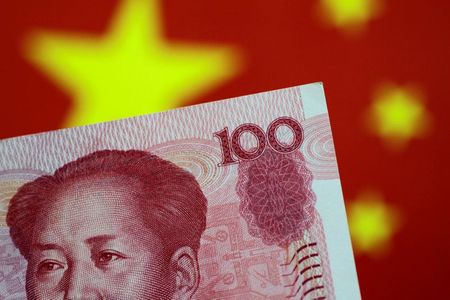BEIJING (Reuters) – China’s new yuan loans are expected to rebound in November from the previous month as the central bank seeks to bolster slowing growth in the world’s second-biggest economy.
Chinese banks are estimated to have issued 1.56 trillion yuan ($245.90 billion) in net new yuan loans last month, up from 826.2 billion yuan in October, according to the median estimate in the survey of 26 economists.
That would also be much higher than the 1.43 trillion yuan issued the same month a year earlier.
China’s central bank said on Monday it would cut the reserve requirement ratio (RRR) for banks on Dec. 15, its second such move this year, releasing 1.2 trillion yuan in long-term liquidity to bolster business activity.
On Tuesday, the central bank cut the rates on its relending facility by 25 basis points (bps) to support the rural sector and small firms.
Still, analysts see economic growth slowing futher into 2022 and expect further cautious policy easing in coming months.
China will continue to implement proactive fiscal policy and prudent monetary policy next year. It will keep economic operations within a reasonable range in 2022, the Politburo, the country’s top-decision making body, said this week.
Annual outstanding yuan loans were expected to grow by 11.9% for November, the same as in October and hovering at the lowest since May 2022, the poll showed. Broad M2 money supply growth in November was seen at 8.7%, the same as the previous month.
China’s local governments issued a net 2.91 trillion yuan in special bonds in the first 10 months, the finance ministry data have shown.
The government will strive for early issuance of 2022 special local government bonds.
Any acceleration in government bond issuance could help boost total social financing (TSF), a broad measure of credit and liquidity. Outstanding TSF growth slowed to 10.0% in October, unchanged from September.
In November, TSF is expected to rise to 2.7 trillion yuan from 1.59 trillion yuan in October.
($1 = 6.3482 Chinese yuan renminbi)
(Reporting by Judy Hua and Kevin Yao; Editing by Kim Coghill)











